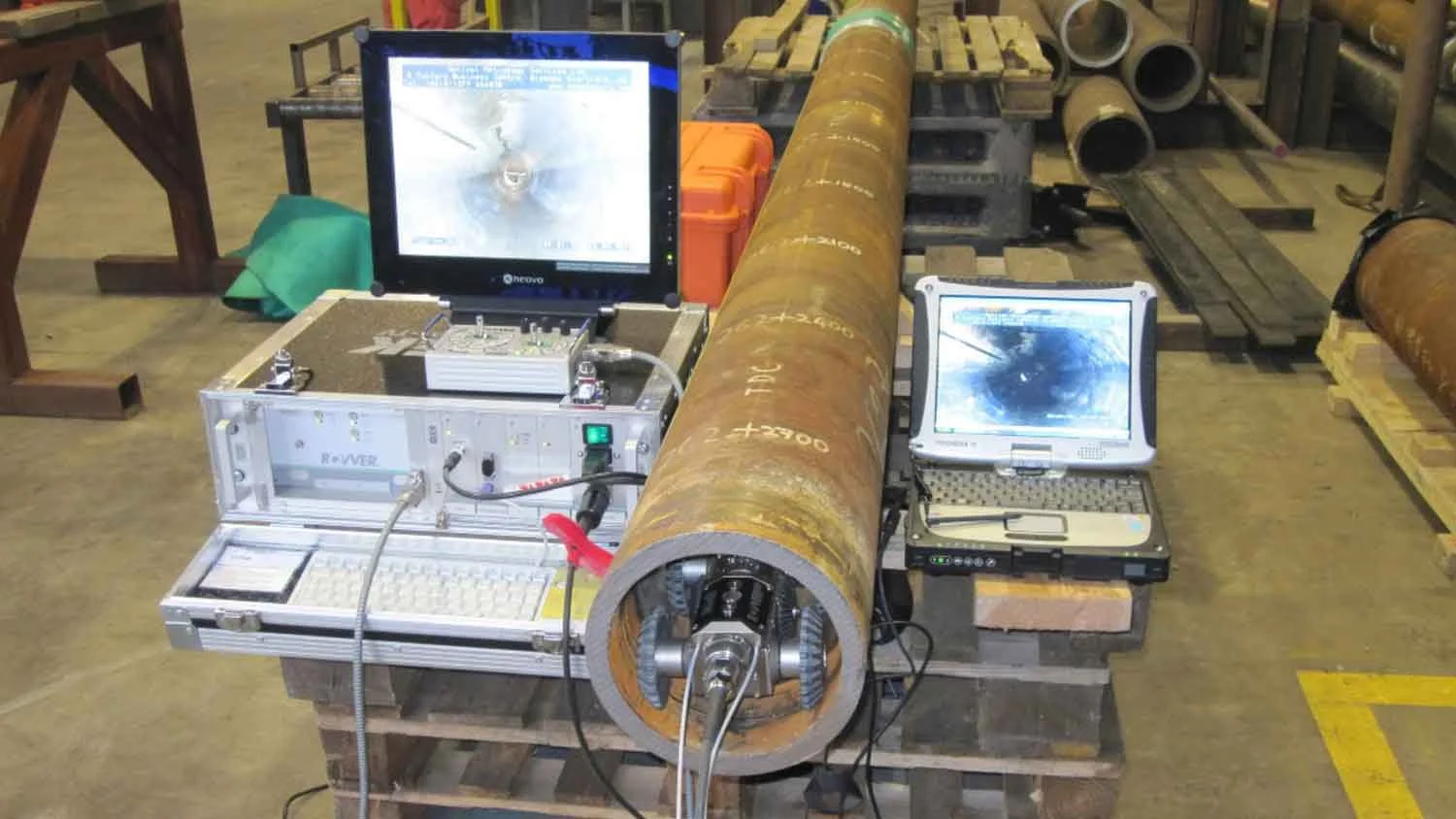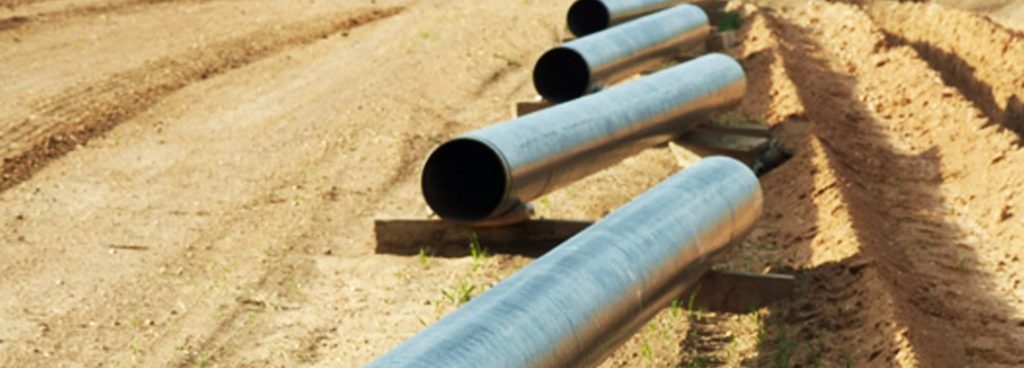Taking Full Advantage Of Efficiency: Pipe Welding Assessment Best Practices
In the world of pipe construction, the honesty and security of welded joints are extremely important. Making sure that welding examinations are conducted successfully and efficiently can significantly influence the overall top quality of the job. By implementing finest practices for pipe welding inspection, companies can streamline procedures, minimize mistakes, and enhance job timelines. From utilizing cutting-edge innovation to developing strict assessment procedures, there are many approaches that can be employed to optimize performance in this important facet of pipe building - Pipeline Welding Inspection. The precise attention to information called for in welding examination holds the key to the lasting durability and reliability of the pipelines, making it a topic of utmost value in the sector.

Significance of Effective Welding Examinations
Efficient welding evaluations play a vital duty in ensuring the structural integrity and security of pipelines. Appropriate examinations are important to recognize any kind of defects, suspensions, or flaws in the welded joints that might jeopardize the general stability of the pipe system. By carrying out complete examinations, assessors can identify concerns early on, preventing potential leakages, tears, or failings that might have severe ecological and security repercussions.
Exact and prompt welding examinations likewise assist in preserving compliance with sector criteria and laws. Sticking to these requirements is not only a lawful need however also a necessary action to assure the dependability and longevity of the pipes. Reliable evaluations can add to cost financial savings by minimizing the need for expensive repair work or substitutes due to welding flaws that can have been avoided or fixed throughout the evaluation procedure.
Making Use Of Innovation for Assessments
To enhance the effectiveness and precision of pipeline welding evaluations, the combination of sophisticated technologies has come to be progressively essential in guaranteeing extensive and exact analyses of welded joints. One of the crucial technological innovations in pipeline welding inspections is the usage of automated ultrasonic screening (AUT) systems. By embracing these technical remedies, pipeline welding inspections can be performed much more effectively, leading to higher quality welds, improved overall safety, and minimized job timelines.
Developing Clear Evaluation Methods
Developing clear inspection methods is crucial for making sure uniformity and dependability in the pipeline welding examination procedure. These methods function as a set of standards that outline the certain steps, requirements, and approaches to be complied with throughout examinations. By clearly defining the evaluation methods, all examiners associated with the procedure can comprehend their roles and responsibilities, bring about a more standardized and effective inspection operations.

Routine review and updates to the examination methods are also critical to adapt to altering sector requirements and demands. By constantly refining and enhancing the procedures based on feedback and lessons learned, pipe welding examinations can promote the best criteria and regulative compliance.
Training and Certifications for Inspectors

Educating and accreditations for examiners are paramount in making certain the skills and efficiency of individuals entrusted with supervising pipeline welding procedures - Pipeline Welding Inspection. Correctly educated examiners possess the needed understanding and abilities to successfully evaluate weld top quality, adherence to welding procedures, and conformity with market requirements and policies
Qualifications, such as those used by read the full info here the American Welding Culture (AWS) or the American Petroleum Institute (API), confirm an examiner's knowledge and capacity to carry out examinations to the greatest criteria. These accreditations usually need strenuous training, evaluations, and recurring professional advancement to make certain that inspectors remain existing with the current innovations in welding technology and assessment techniques.
Along with official qualifications, continuous training programs play a vital role in improving examiners' capacities. These programs cover a large range of subjects, consisting of welding processes, problem detection, security methods, and pertinent codes and requirements (Pipeline Welding Inspection). By buying extensive training and qualifications for inspectors, business can maintain the honesty of their pipe welding projects and minimize the risks connected with low-grade welds
Continual Enhancement in Evaluation Processes
Structure upon the foundation of certified and qualified examiners, constant enhancement in assessment processes is vital for making certain the recurring top quality and conformity of pipe welding operations. By executing a system of constant improvement, pipeline welding inspection procedures can advance to fulfill the altering demands of the industry, technological advancements, and governing needs. This includes frequently examining and evaluating examination tools, procedures, and strategies to identify locations for enhancement.
One key facet of constant improvement in assessment processes is responses. Gathering input from inspectors, welders, designers, and other stakeholders permits an extensive assessment of present practices and the recognition of potential locations for improvement. In addition, leveraging data and analytics can offer beneficial insights right into the efficiency of examination processes, making it possible for informed decision-making for optimization.
In addition, investing in training and growth programs for inspectors can make sure that they are equipped with the most current knowledge and skills to execute their responsibilities successfully. Continuous find this enhancement is a vibrant procedure that requires commitment and dedication from all stakeholders to drive excellence in pipeline welding examination practices.
Final Thought
To conclude, taking full advantage of effectiveness in pipe welding examinations is vital for guaranteeing the quality and safety and security of facilities projects. By making use of innovation, establishing clear procedures, offering correct training and accreditations for inspectors, and constantly boosting assessment processes, companies can streamline their procedures and minimize threats. It is crucial for industries to focus on efficient welding assessments to maintain high criteria and meet regulative requirements.
Effective examinations can contribute to set you back savings by lessening the need for costly repair work or substitutes due to welding defects that might have been avoided or remedied throughout the evaluation procedure.
Establishing clear assessment procedures is necessary for ensuring consistency and reliability in the pipe welding evaluation process. By clearly specifying the assessment protocols, all inspectors entailed in the process can comprehend their duties and duties, leading to a more reliable and standardized evaluation process.
Clear examination methods help in decreasing the probability of mistakes or oversights throughout the examination procedure.Structure upon the structure of certified and qualified examiners, constant enhancement in assessment procedures is necessary for making certain the recurring top quality and conformity of pipe welding procedures.